Listen to the audio version of this story. For more, subscribe to our podcast.
The World’s Largest Laundromat has 301 washers and dryers. It has 15 finches and miniature doves living in an aviary next to the bill-changing machines. It has a play area with a big roll of white butcher paper for drawing and a plastic replica of Snoopy’s doghouse that rocks and lights up for 50 cents. The World’s Largest Laundromat is open 24 hours a day, seven days a week. It never closes — not for Thanksgiving or Christmas, or when the temperature drops so low that area schools shut down. Tom Benson, the owner, doesn’t even know how to lock the building.
“I don’t have a key,” Benson says. “There is no key! Everything’s automatic doors, and they’re always on.”
A laundromat of some kind has occupied this corner of Berwyn, Ill., for more than half of the Chicago suburb’s 108 years. But it was only in the 1980s that it took on its superlative name — the result of winning a contest, sponsored by an industry trade group, to find the world’s biggest laundromat by square footage. (The selection process wasn’t exactly scientific, but the World’s Largest Laundromat also hasn’t faced any significant challenge to its title.) And it wasn’t until 1999, when Benson, a business broker who had been hired to sell the laundromat, ended up buying the store himself and reshaping it into a family-friendly community center.
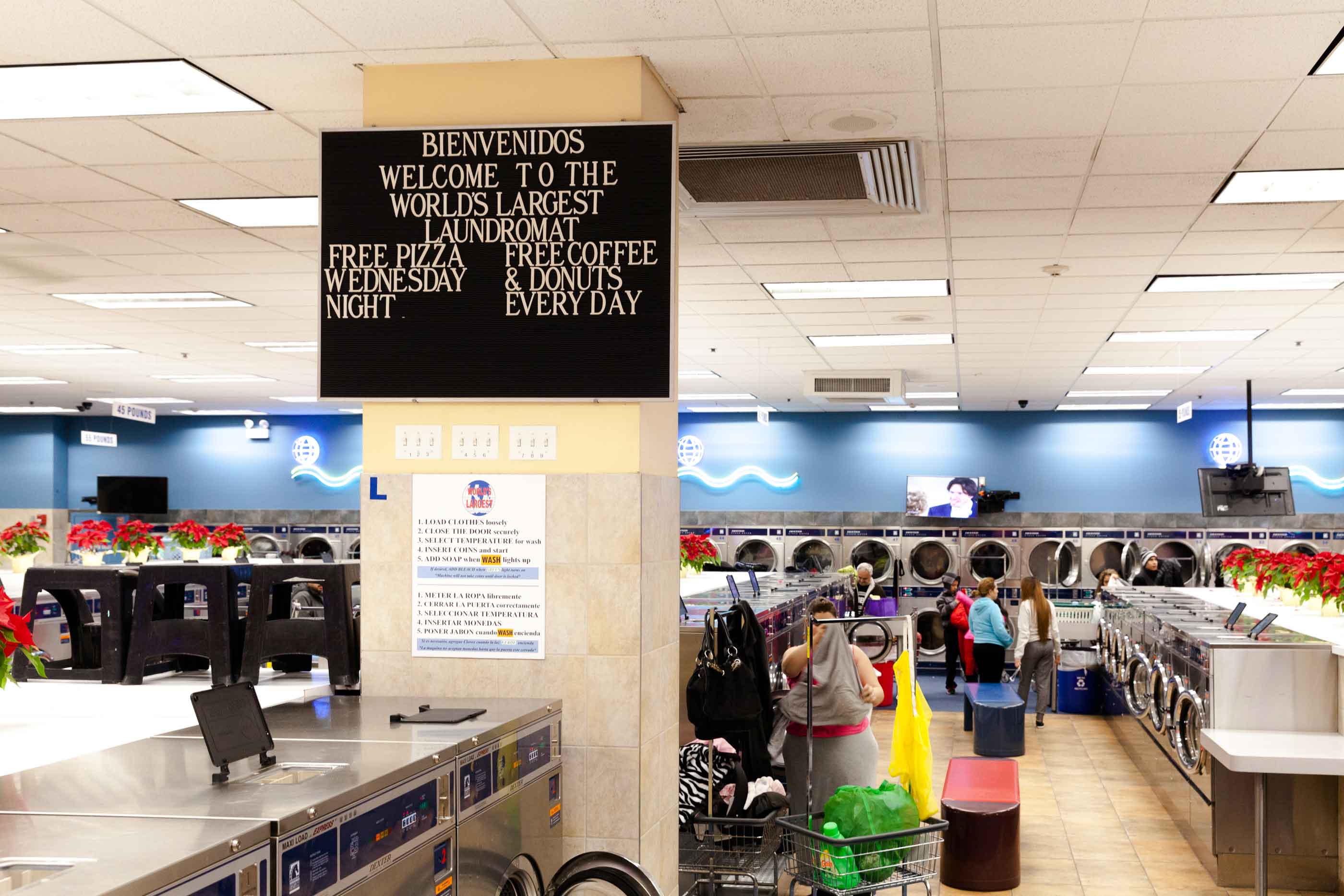
With its Wednesday pizza nights, immigration seminars and summer children’s reading program, the World’s Largest Laundromat has become a “third place” for area residents, offering opportunities for social interaction typically associated with the neighborhood coffee shop or diner. Ray Oldenburg, an American sociologist, introduced the concept of the third place in his 1989 book “The Great Good Place,” defining it as a public gathering space that’s distinct from home or workplace and vital to the life of the community. Third places have existed throughout history — the tavern, the general store — and Starbucks used the term to market its coffee shops.
Berwyn has a population of about 57,000 people and not a single Starbucks. In cities like Berwyn that have a high proportion of low- to middle-income residents and renters, the laundromat “is one of the few remaining places where people congregate,” says Brian Wallace, chief executive of the Coin Laundry Association, which estimates there are about 29,000 retail self-service laundries in the U.S. that generate $5 billion in annual sales. “Now what the Bensons have done is double down on all that and get very active in the community, doing a lot of those engagement activities that I imagine endear them to the neighborhood. I think they feel good about doing it, but it’s also secondarily good for business.”
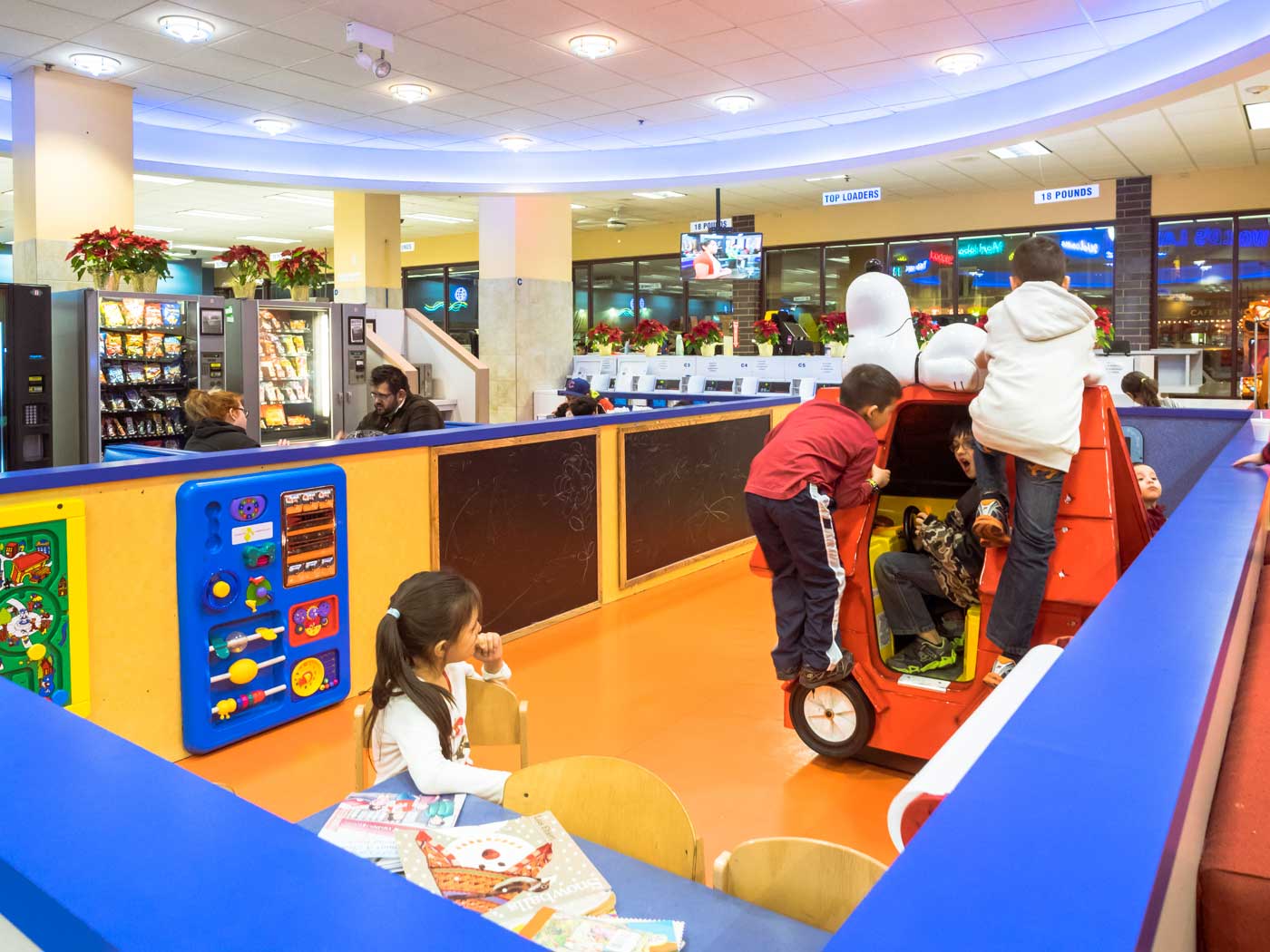
Customer loyalty is a tenuous thing in Benson’s industry. As long as the machines work, prices are competitive and parking is available, people tend to default to their closest laundromat. Benson has worked to persuade customers to drive an extra couple miles to his store, even if they pass nearly a half dozen other laundries on their way. He estimates, based on surveys, that a quarter of his clientele come from at least two miles away.
You change something that’s pure drudgery – doing laundry – into something that’s enjoyable.
“The idea is to respect their time,” Benson says. “The average person spends two hours here. …If you make that time somewhat useful to them, if they enjoy the time, if the atmosphere is good — and I think it’s very friendly inside here — they’re not going to feel bad about coming. You change something that’s pure drudgery — doing laundry — into something that’s enjoyable.”
Thinking Big
The average laundromat in the U.S. is about 2,500 square feet. The World’s Largest Laundromat is 13,500 square feet. Despite its grand size, the business was in a sorry state when Benson first encountered it. The store’s original owner, a businessman named George Fancher, had sold it around 1991 to a pharmacist who ran the business as a secondary source of income, and the laundromat gradually fell into disrepair.
About eight years after that, the pharmacist hired Benson, a business broker with experience buying and selling dry cleaners, to offload the store. Benson courted buyers for a year and a half, but no one wanted what had become a rundown laundry, with boarded-up windows and a ripped awning. A newer, glitzier laundromat had opened down the street, taking away customers and sales.
“He became more desperate as time went along, and eventually he got a little more realistic about price,” Benson says of the owner. “And so it reached a level where he was in a real hurry, and I was the only one who knew the business well enough to buy it in a hurry.”
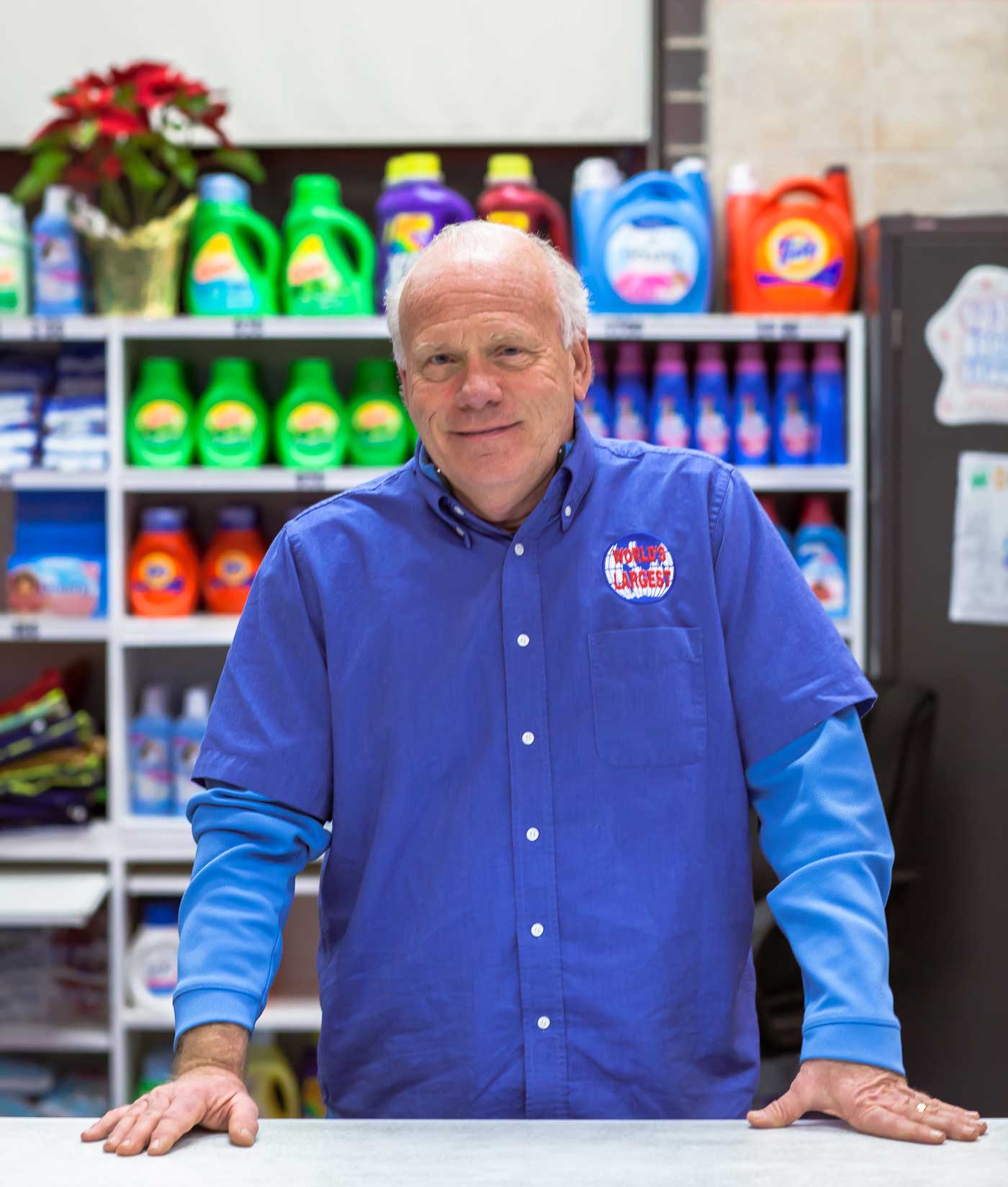
Benson had sold about 200 businesses by then, including a smaller laundromat owned by the same pharmacist, and he felt like the World’s Largest Laundromat had untapped potential. Fancher, the original owner, had started with one small storefront and taken over the adjoining two spaces, creating a uniquely massive laundromat that had free city parking behind the building. Berwyn’s demographics — a densely populated area filled with renters — were also favorable. Benson figured that with his vision, business sense and work ethic, he could turn the laundromat into a viable enterprise again.
In the month before he officially closed on the business, Benson scoped out the competition within a two-mile radius. He visited five or six laundromats a day, observing their operations and counting the number of customers. Benson found himself unsure whether to count the children he saw.
“Kids represent clothes, and yet it’s the adults who are the decision makers,” he says. “So in lieu of making a decision, I counted both. And I found that 25 percent of the people inside a laundromat at any time were under 16 years old.”
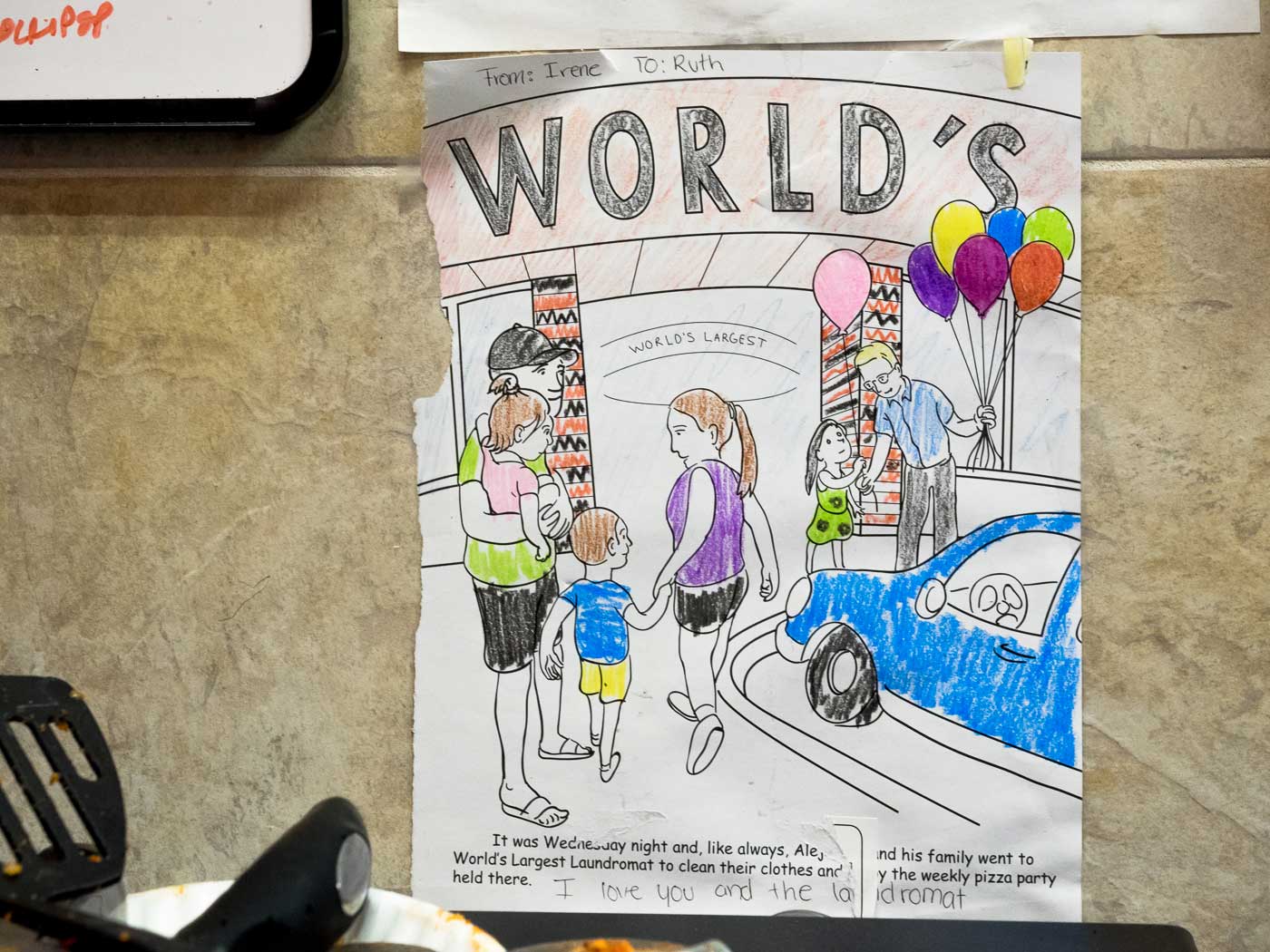
That realization was responsible for what’s become the hallmark of the World’s Largest Laundromat: its family-friendly atmosphere. It’s why Benson serves free pizza on Wednesday evenings and hired a student from the School of the Art Institute to draw a coloring book depicting a Latino family’s trip to the laundromat. (That same artist has made three editions of the coloring book since.) It’s why he started serving free donuts and coffee every day and set up a bird aviary, which he’d seen at the nursing home where his mother’s second husband lived.
There were other improvements: Benson replaced 40 percent of the staff and surveyed customers about what changes they’d like to see. The most popular response was one he didn’t even include in the list of choices: a women’s bathroom. At that time, the laundromat had just one tiny restroom, painted black to discourage graffiti. He knocked out a wall, tossed out a few old machines and put in a new bathroom.
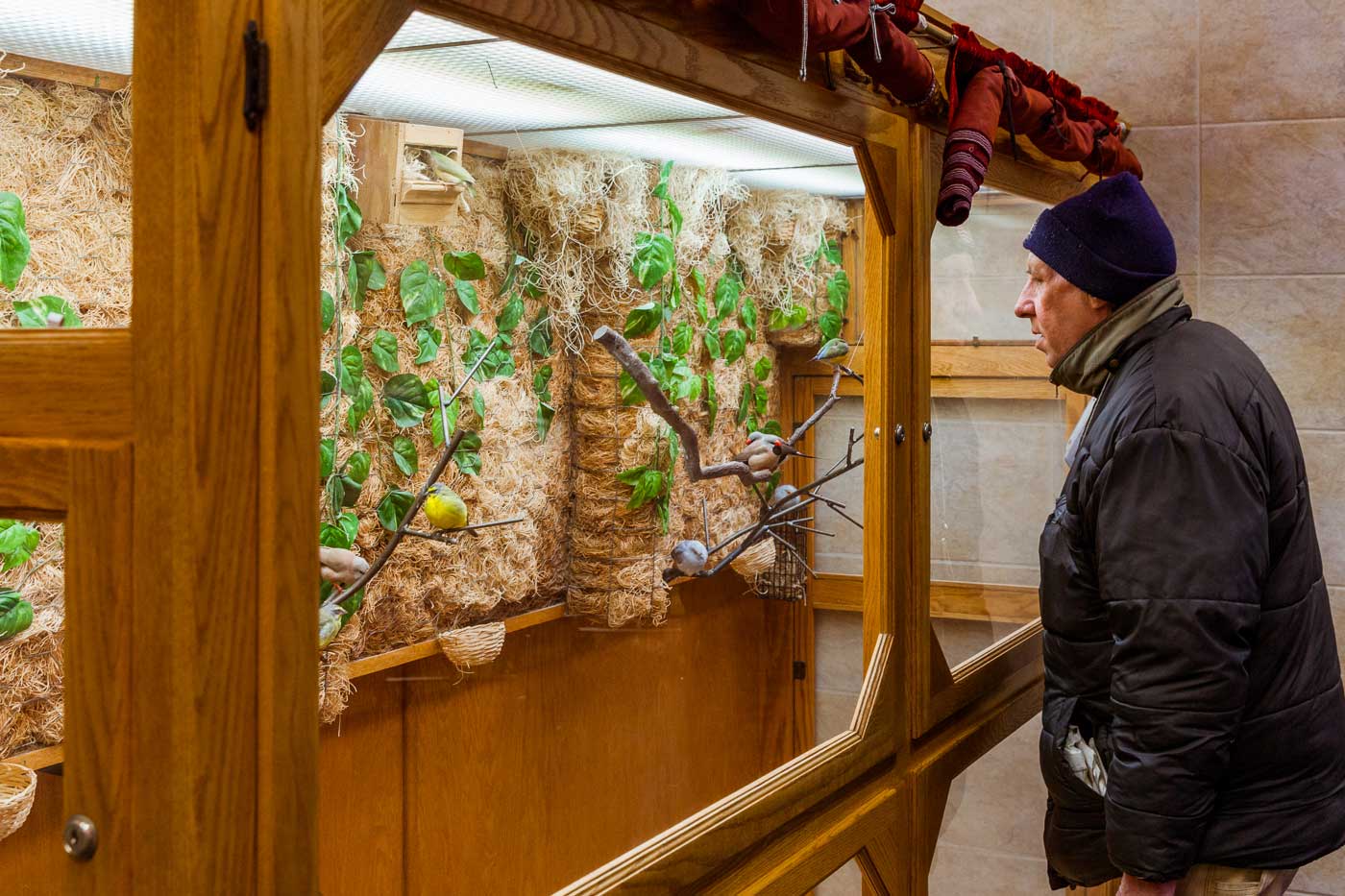
Benson worked 70-hour weeks in his first six months on the new job. He wanted to show customers that he was available and constantly fixing up the place. Within three months, he says, sales began turning upward. Customers liked the ambiance, and how Benson would dress up as Santa Claus around Christmastime and hand out toys to kids. He’d also pose for pictures with them and make customized photo calendars for the families. Other upgrades were less visible to customers, like the 26 rooftop solar panels for heating hot water that Benson installed using grant money from the state of Illinois.
Then, in 2004, the World’s Largest Laundromat burned to the ground.
Starting Over
The four-alarm fire started around 12:50 p.m. on a Sunday in August and took more than 12 hours to be extinguished. Fire officials later determined that a spark behind a dryer had started the blaze. All the customers and employees inside the store escaped safely, but the birds didn’t make it.
Benson and his wife were in London on vacation at the time. His older son, Eric, had flown in from Colorado during time off from his regular job to mind the store. The Bensons were planning to spend three days in London, then go on a road trip and stay in bed and breakfasts. On their last night in London, they returned to their hotel to find a message waiting at the desk.
“I called home, and Eric said that it burnt down, looked pretty bad,” Benson recalls. “We got on a flight the next morning.”
Benson landed at O’Hare International Airport and drove straight to the laundromat, not knowing what he would find. He’d only had a brief conversation with Eric and a terse voicemail on his cell phone from one of his managers: “ ‘Tom, it’s Jimmy. Store’s gone.’ Click. That was it. I’m glad I didn’t get that until I was in Chicago.”
Benson arrived at 6246 W. Cermak. There was nothing left of the 13,000-square foot-store. But his employees were all sitting on the curb waiting for him.
“Something inside me said, ‘I gotta save them. I can’t let this moment be this sad,’ ” he says. “So I walked up to them and I said, ‘We’re gonna be better. Just hang in there.’ ”
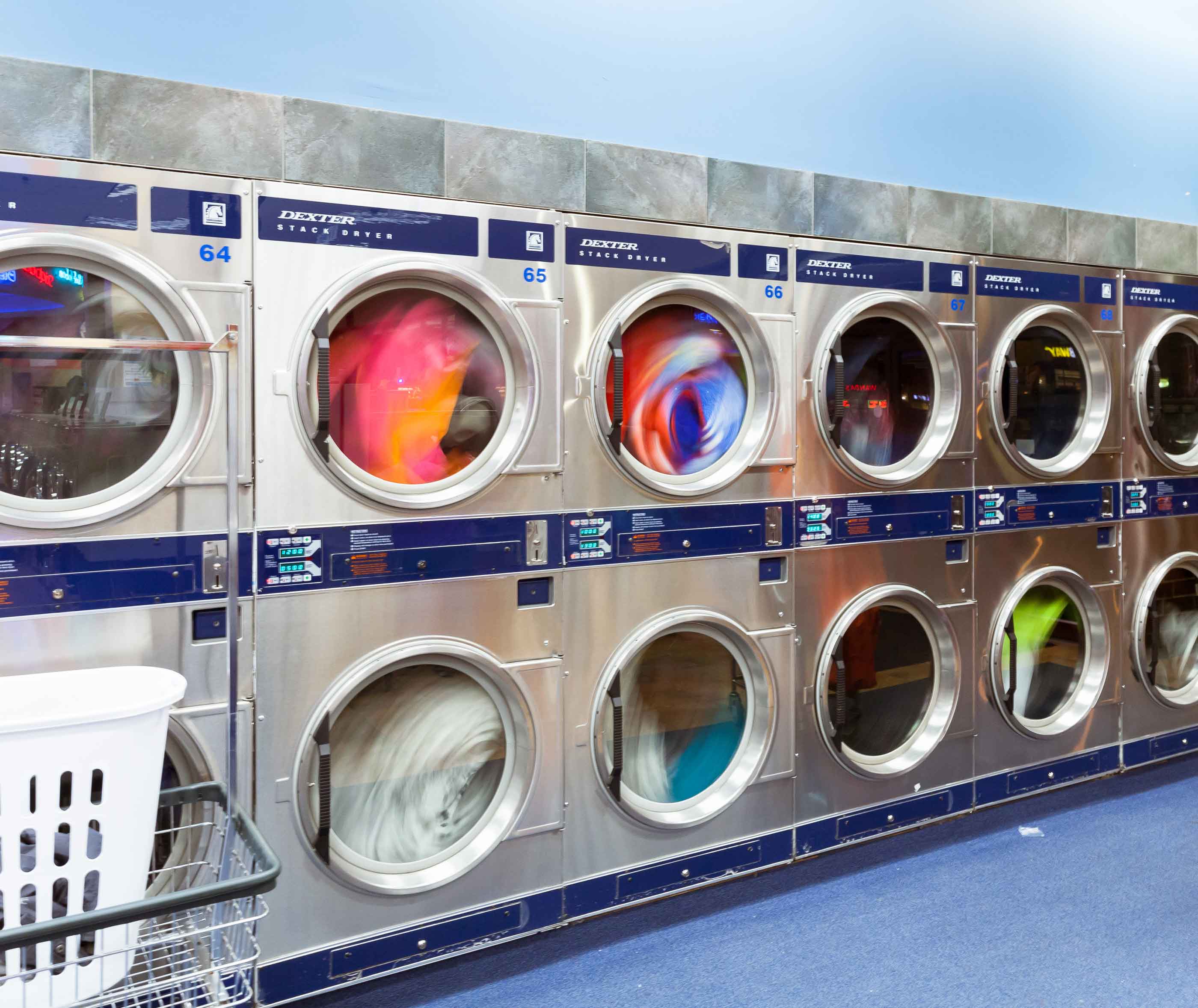
And it was better — perhaps more than Benson could have imagined. He had upgraded his insurance policy a year earlier, and it turned out it covered not only the $2.5 million in rebuilding costs, but also a month of pay for his employees so they’d have a financial cushion as they looked for new jobs. The laundromat’s supervisors received a year of pay.
Forced to start from scratch, Benson set about designing his ideal store. The old structure, cobbled together out of three storefronts, had dark corners and awkwardly placed walls. Today, the World’s Largest Laundromat is one wide-open space. An employee standing at the front counter can see the opposite side of the building — an important security consideration for a 24-hour business. Benson also got rid of dry-cleaning equipment that had been there before, freeing up room for a children’s play space next to the dining area’s wide booths and vending machines. He brought back the aviary, renting the birds from a company in South Dakota, and installed new solar panels in the roof, increasing the number of panels from 26 to 36.
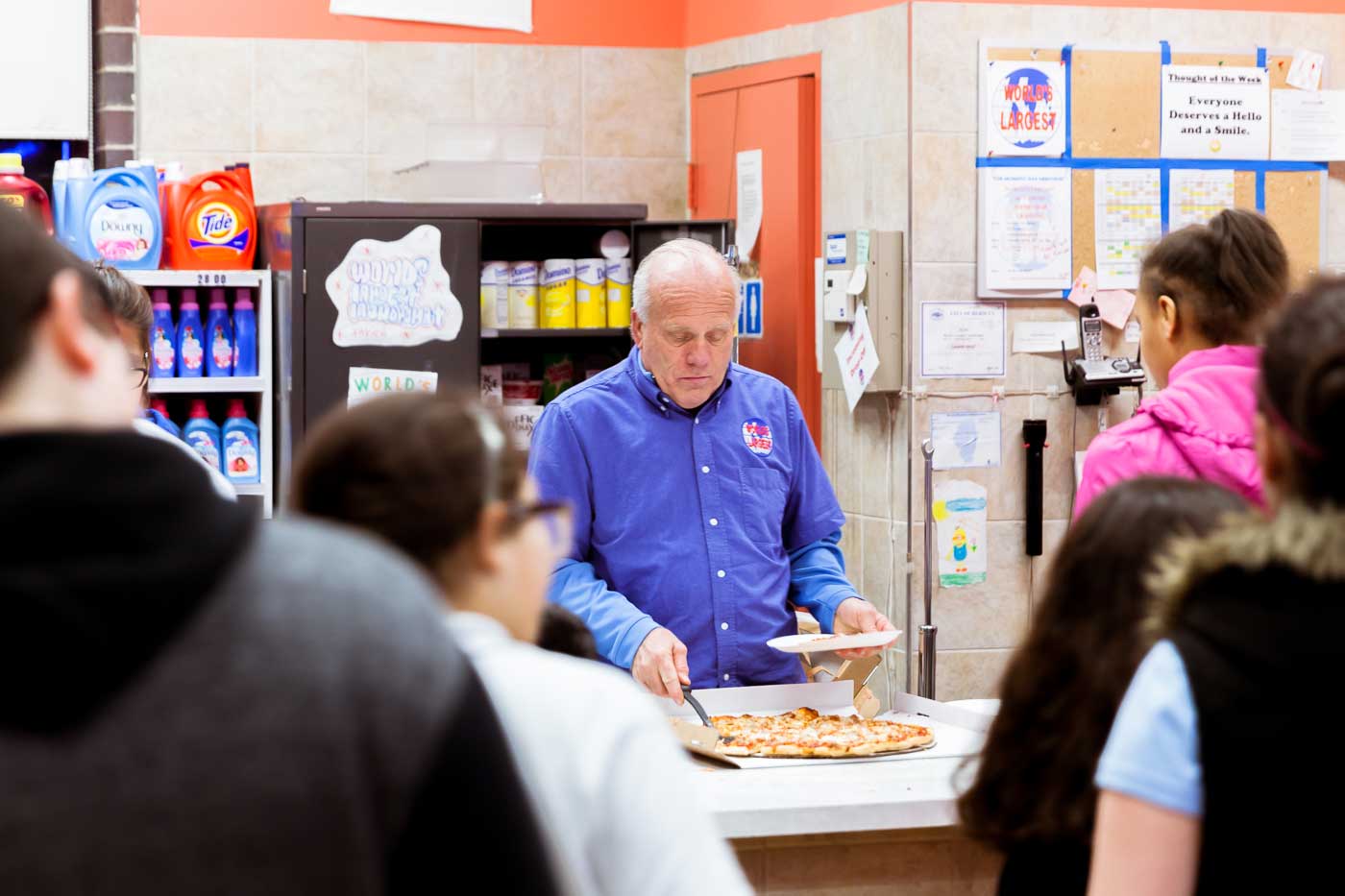
“My biggest problem was convincing people I wanted to spend money,” Benson says. “Everybody was looking … to save money because that’s how this industry operates. Everybody’s trying to do it the cheapest way, and I’m like, ‘No, we’re building Taj Mahal here because I’ve got the money to do it. …We have 8,000 square feet of carpeting, which you never find a laundromat, but I did it for sound reduction and also because I swear there are probably lots of little kids in this neighborhood who learned to walk on my floors. So why should they fall down on tile when they can have a carpet?”
The World’s Largest Laundromat reopened in early 2006, and its customers returned. They came back for pizza night — the store serves 35 large pizzas on a typical Wednesday evening — and for the large TVs tuned to Univision and the Disney Channel, the free Wi-Fi, the face painting and magician and balloon animals. On a recent Wednesday with more than 100 people in the store, Benson and an employee served pizza from the front counter as a dozen kids sat in a circle around a young woman from a local children’s fitness center, belting out “Heads, Shoulders, Knees and Toes.” Other kids did homework at metal school desks or perched on counters with their smartphones. One couple pushed a laundry cart with a slightly askew car seat inside it, their baby girl blinking uncomprehendingly at the lights and noise of the nearby The Fast and the Furious arcade game.
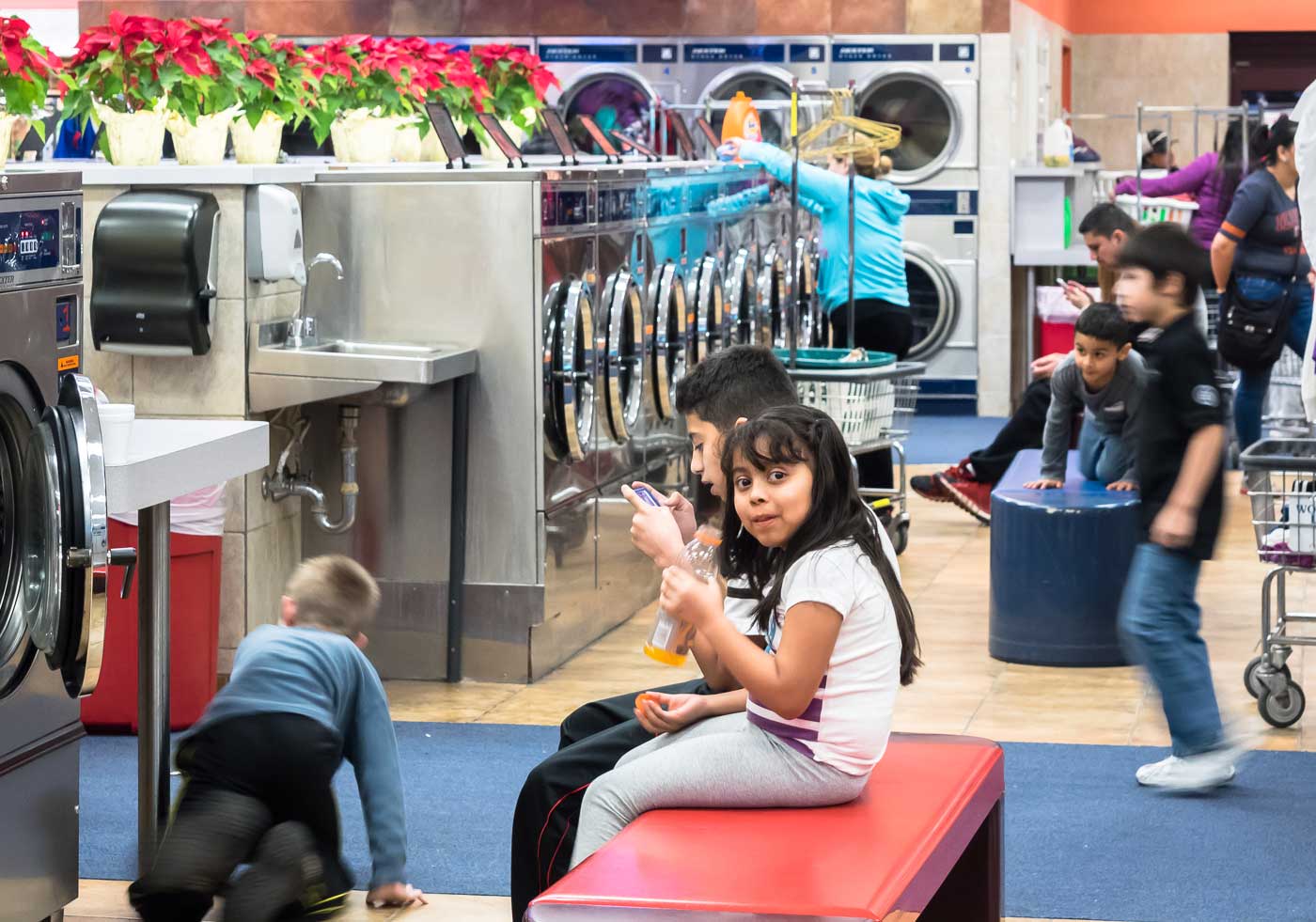
“They have a lot of stuff for kids,” says a 25-year-old woman named Victoria, who is folding clothes as her stepdaughter plays nearby. “Tonight’s free pizza. They have seats. Everything’s nice, everything’s pretty clean. …I’ve been to (another laundromat) down the block, but it doesn’t compare.”
Weekends can be even busier, with customers carefully steering overflowing laundry carts around each other and employees making continuous cleaning rounds to sweep up used fabric softener sheets and other detritus. The laundromat goes through 25 dozen donuts on Sunday mornings and they’re usually all gone by 10 a.m.
Benson believes his model, as unique as it is in the self-service laundry industry, can be successfully replicated at a second store and perhaps more. After the World’s Largest Laundromat reopened, his two sons, Mark and Eric, came onboard to help run the business and scout real estate for a second location.
It seems funny for a laundromat, but we try to build an emotional connection.
Running a laundromat comes down to providing utilities: electricity, heat and water. It’s a capital-intensive endeavor, but Mark Benson says his family’s business is smart about its energy costs. Utilities represent less than 20 percent of the store’s revenues, compared with a national average of 25 percent. Even so, opening another World’s Largest Laundromat — and yes, it would have the same name, even if only one could truly claim the title — would need more than just smart money management.
“It seems funny for a laundromat, but we try to build an emotional connection,” says Mark, who was a newspaper copy editor before joining his father at the store. “And before I started here, I would kind of laugh at that. An emotional connection in a laundromat? No one wants to go to a laundromat. …But if you come here on a Wednesday night and get free pizza, and your whole family sits down at a table and has pizza while your clothes wash, that’s an emotional connection to your family. That’s a family meal you’re not losing because of laundry night.”

